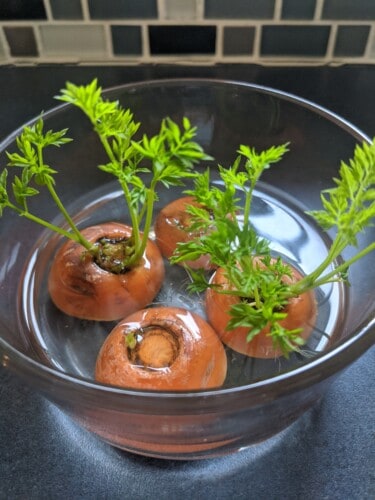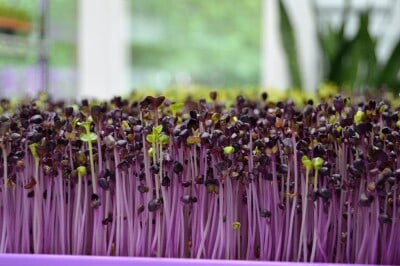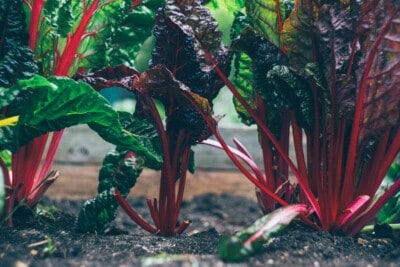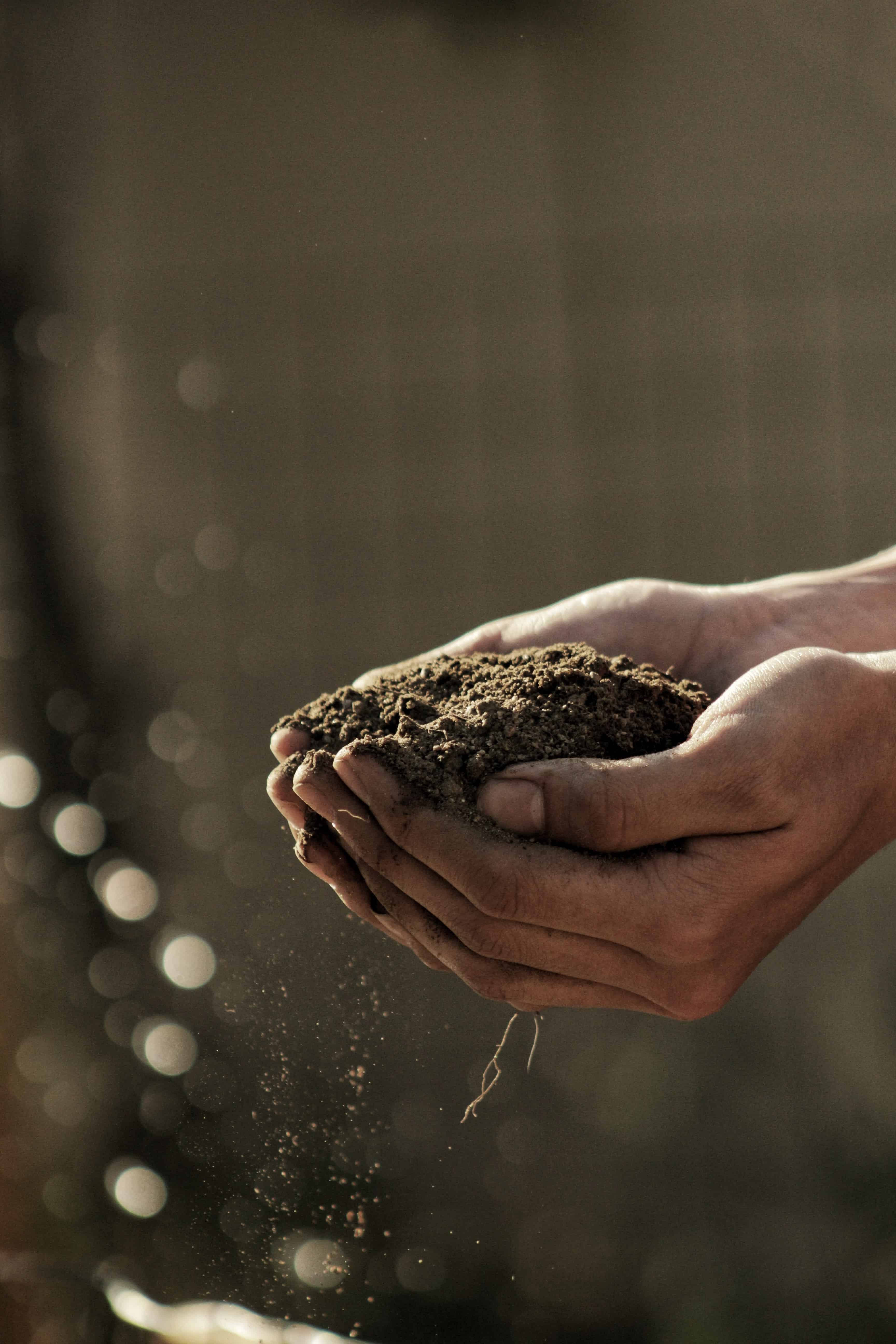Before the pandemic, when I finished peeling and chopping carrots, I’d chuck the ends (or stems) into the organic bin without a second thought. But with grocery store shopping now being an anxiety-inducing exercise, and the future of supply chains and food security riddled with uncertainties, I am beginning—at age forty—to explore growing my own food. I’ve started by saving and soaking bits of carrots.
For the past couple of weeks, any time our family eats carrots, I’ve been keeping the nubby ends, or the stems where the carrot greens grow from, and placing them in a small bowl with a thin layer of water. It only took a few days before iridescent green leaves began to sprout, and now (ten days later) they’ve shot up several inches high. I catch myself gazing at the new growth several times a day— while I’m doing dishes, or filling my coffee carafe with water—and the mere sight of this incredibly simple bit of growth gives me hope and promise. But this is as far as I’ve gotten so far.

Nicola Thomas is a community capacity builder, the founder of Grand River Food Forestry, and a permaculturist who specializes in taking underutilized urban spaces and transforming them into sustainable green spaces. She loves dirt and sees great potential in it—from what it can yield to how it can connect and feed communities.
Nicola began thinking about food differently when her kids were young, and she was forced to make choices while grocery shopping. “I went to buy organic raspberries, that we’re about 7 or 8 dollars. I have three kids, so when you take that home and put it on the table it goes quickly,” she tells me, it was a moment in time that had a deep impact. She realized that not only could she grow the raspberries herself, but that they were the kind of plant that grow so quickly, that many consider them to be an invasive species. “I thought it was a ridiculous notion that here is this plant that will just grow whether we want it to or not and it coast me 8 dollars. Then I started to think about ways I could save money. The nutrition level is much higher when you pick it and eat it.”

Overpriced berries inspired her to start gardening, but the real education came when she began to get her hands dirty. “As I started working with the soil, I started to naturally pay attention to what was happening, ” says Nicola, who loves how easily accessible gardening tutorials now are on YouTube, but believes that the best learning comes from doing. “You can’t care about soil if you’ve never participated with it.”
Observing the seasons and cycles of life carefully, and examining the soil close up, led Nicola to intuitively start an age-old permaculture gardening technique referred to as ‘lasagna gardening’, or a way of layering the soil that mimics what nature already does (don’t rake those leaves until after the May long weekend! They are playing a vital role in protecting the undergrowth and naturally fertilizing the soil!)
She didn’t know it at the time, but the lasagna technique she was instinctively discovering, and doing on her own, would become one of the guiding principles for the business that she’s built today. “We have this saying in permaculture: it’s the least amount of effort with the most amount of gain. You don’t want to always have to maintain a site, you want to do biomimicry, or do what nature already does.”
If you’re reading this and thinking, ‘this all sounds great, but I live in an apartment, with a tiny balcony’, or maybe you don’t even have a balcony to work with, there are still ways to get growing, and Nicola has lots of ideas on how to start.
Microgreens
“Microgreens are something you can grow inside. They require little light, and you can have a turnaround between 1-4 days depending on the kind of seeds you are using. It’s very high in nutrition. Once you get used to doing that, you can take those seedlings and plant them outside as well. While we’re stick in, it’s a fantastic source of nutrition and a way to get live greens in winter. Herbs have high nutrition. You can put them on soup, you can put them on salad, there are lots of different ways to eat them.”

Vertical growing





 Follow Us On Instagram
Follow Us On Instagram
